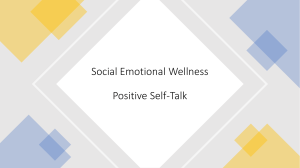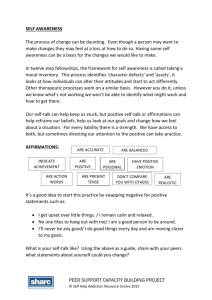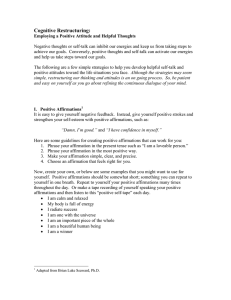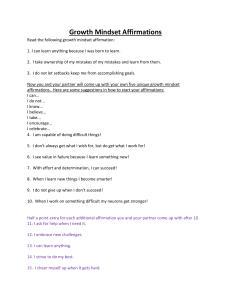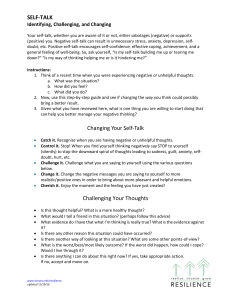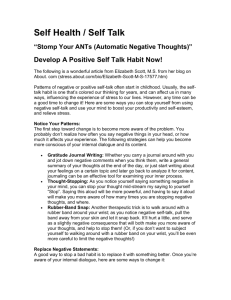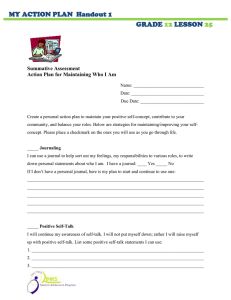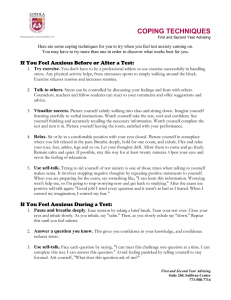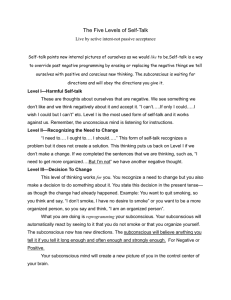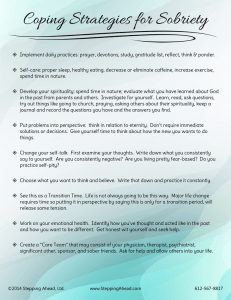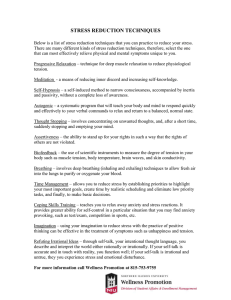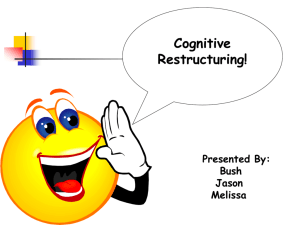Motivation
advertisement
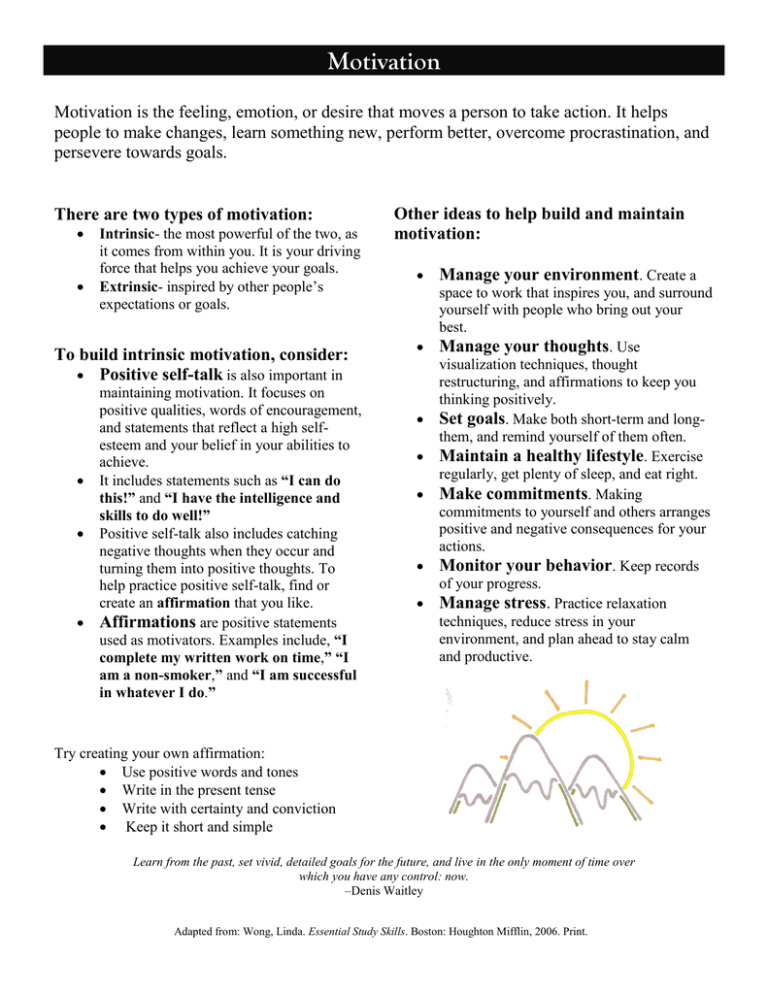
Motivation Motivation is the feeling, emotion, or desire that moves a person to take action. It helps people to make changes, learn something new, perform better, overcome procrastination, and persevere towards goals. There are two types of motivation: Intrinsic- the most powerful of the two, as it comes from within you. It is your driving force that helps you achieve your goals. Extrinsic- inspired by other people’s expectations or goals. To build intrinsic motivation, consider: Positive self-talk is also important in maintaining motivation. It focuses on positive qualities, words of encouragement, and statements that reflect a high selfesteem and your belief in your abilities to achieve. It includes statements such as “I can do this!” and “I have the intelligence and skills to do well!” Positive self-talk also includes catching negative thoughts when they occur and turning them into positive thoughts. To help practice positive self-talk, find or create an affirmation that you like. Affirmations are positive statements used as motivators. Examples include, “I complete my written work on time,” “I am a non-smoker,” and “I am successful in whatever I do.” Other ideas to help build and maintain motivation: Manage your environment. Create a space to work that inspires you, and surround yourself with people who bring out your best. Manage your thoughts. Use visualization techniques, thought restructuring, and affirmations to keep you thinking positively. Set goals. Make both short-term and longthem, and remind yourself of them often. Maintain a healthy lifestyle. Exercise regularly, get plenty of sleep, and eat right. Make commitments. Making commitments to yourself and others arranges positive and negative consequences for your actions. Monitor your behavior. Keep records of your progress. Manage stress. Practice relaxation techniques, reduce stress in your environment, and plan ahead to stay calm and productive. Try creating your own affirmation: Use positive words and tones Write in the present tense Write with certainty and conviction Keep it short and simple Learn from the past, set vivid, detailed goals for the future, and live in the only moment of time over which you have any control: now. –Denis Waitley Adapted from: Wong, Linda. Essential Study Skills. Boston: Houghton Mifflin, 2006. Print.
